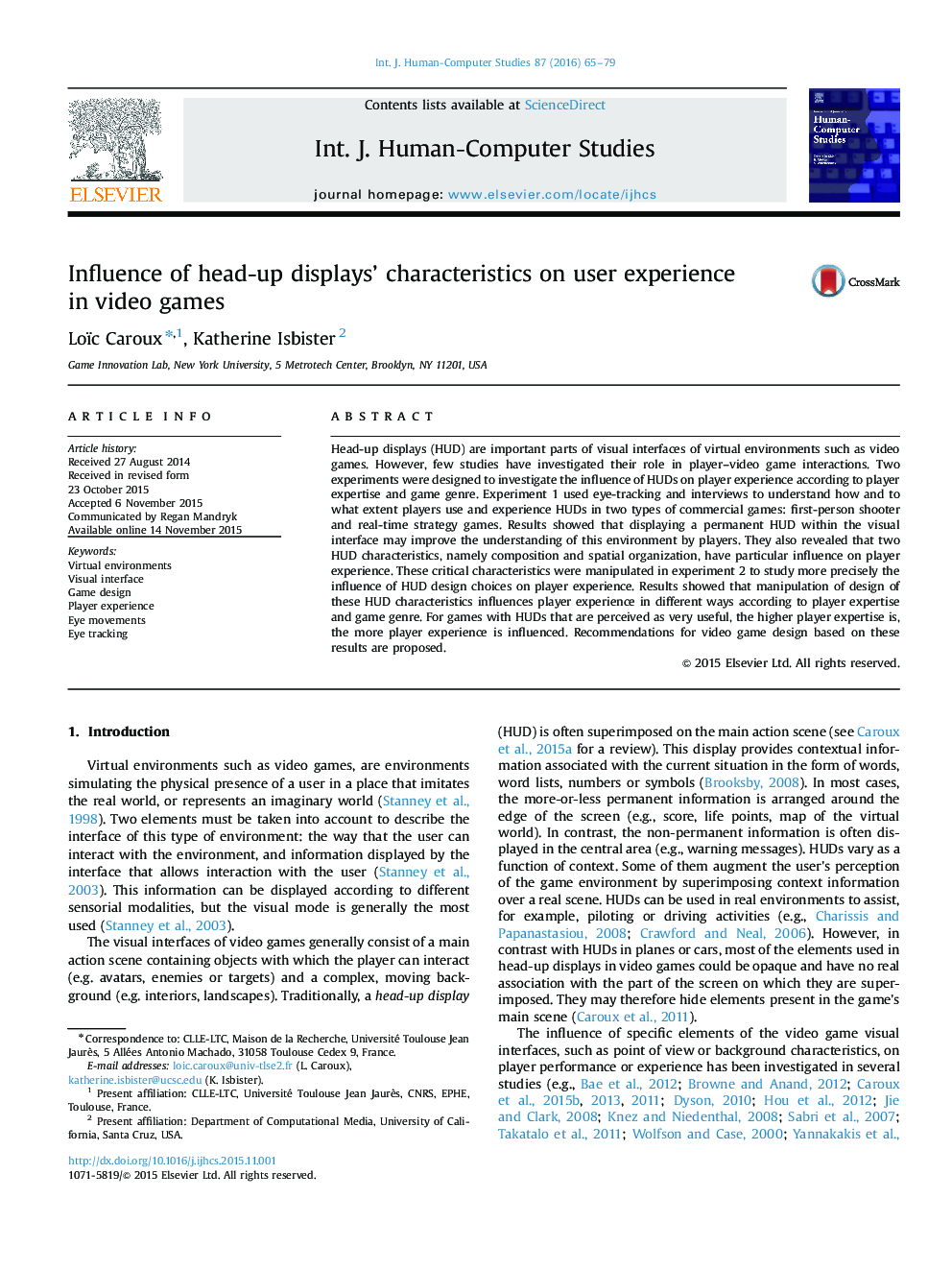| کد مقاله | کد نشریه | سال انتشار | مقاله انگلیسی | نسخه تمام متن |
|---|---|---|---|---|
| 401113 | 1438966 | 2016 | 15 صفحه PDF | دانلود رایگان |
• Permanent HUD may improve players’ understanding of game environment.
• Composition and spatial organization are critical characteristics of HUDs.
• HUD design choices have influence on user experience in video games.
• This influence is different according to player expertise and game genre.
Head-up displays (HUD) are important parts of visual interfaces of virtual environments such as video games. However, few studies have investigated their role in player–video game interactions. Two experiments were designed to investigate the influence of HUDs on player experience according to player expertise and game genre. Experiment 1 used eye-tracking and interviews to understand how and to what extent players use and experience HUDs in two types of commercial games: first-person shooter and real-time strategy games. Results showed that displaying a permanent HUD within the visual interface may improve the understanding of this environment by players. They also revealed that two HUD characteristics, namely composition and spatial organization, have particular influence on player experience. These critical characteristics were manipulated in experiment 2 to study more precisely the influence of HUD design choices on player experience. Results showed that manipulation of design of these HUD characteristics influences player experience in different ways according to player expertise and game genre. For games with HUDs that are perceived as very useful, the higher player expertise is, the more player experience is influenced. Recommendations for video game design based on these results are proposed.
Journal: International Journal of Human-Computer Studies - Volume 87, March 2016, Pages 65–79
